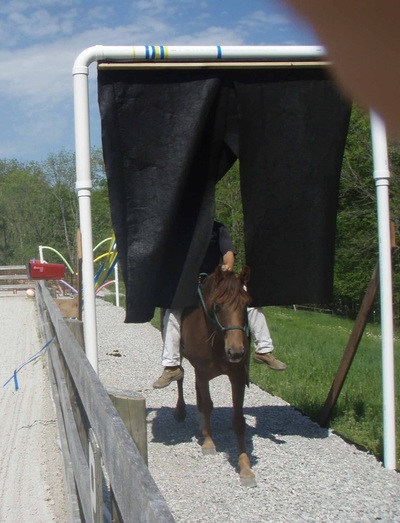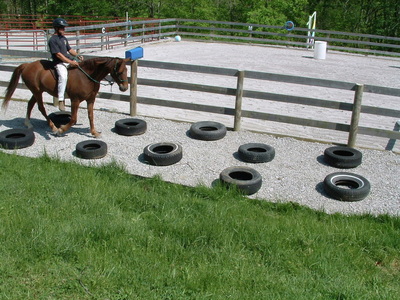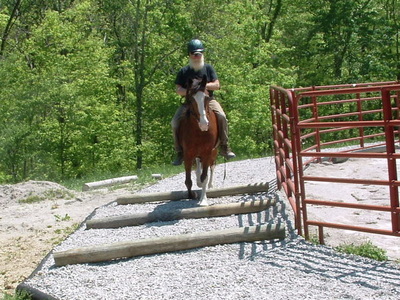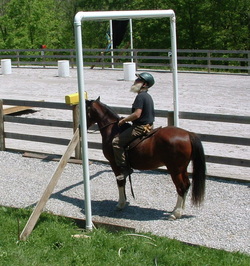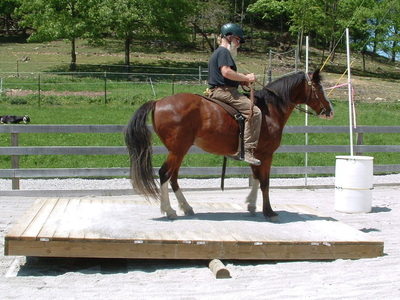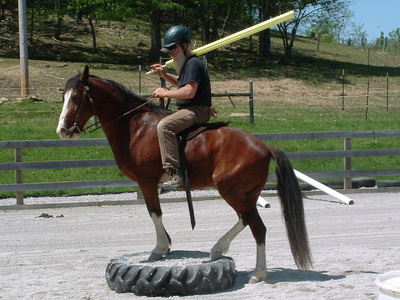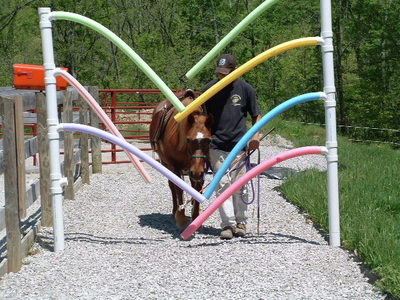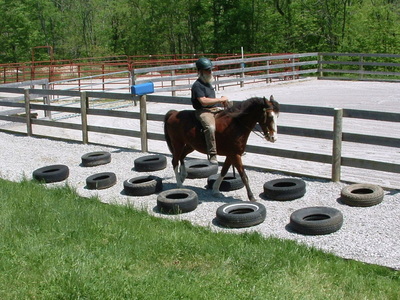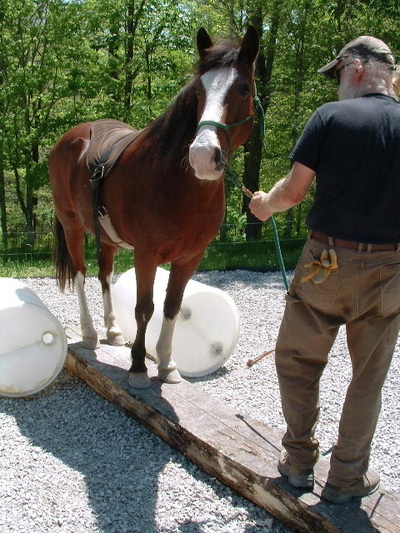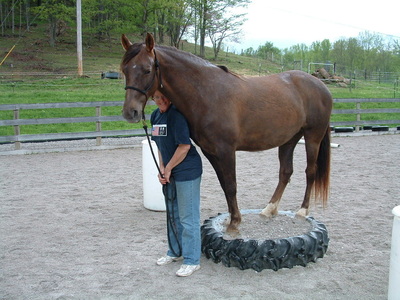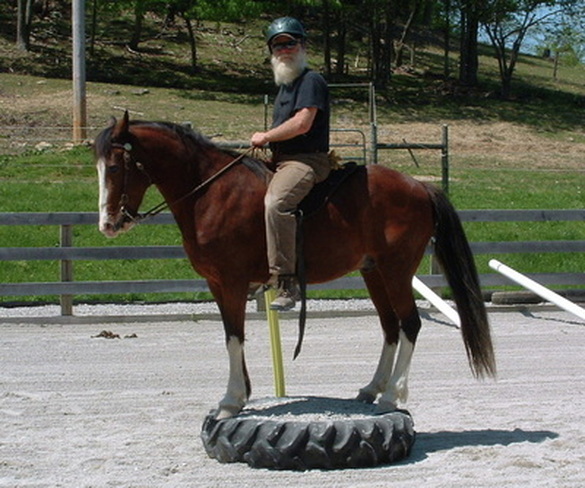Horse Training Elements
The Abilities Course at the "Mothership" in Jackson County
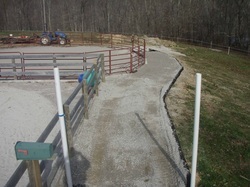
The trail itself consists of a nearly level 8' wide gravel pathway bedded with Geo‐textile and covered with crushed rock. This provides safe footing for leaders, side walkers and the equines. The trail will have optional loops to offer changes in elevation and varied complexity of obstacles depending on the skill level of the participant. The trail and the elements of the course will allow for certain choices to be made, by the instructor, to include or exclude more challenging and difficult aspects of the course. Participants may experience the course mounted on the horse or by leading the horse through the obstacles. The degree of difficulty will vary from level trail to steeper or sidling trail, from a simple bridge to a teeter‐totter, from walking over a tarpaulin to walking through a water crossing, from going around an obstacle to walking over it, from passing
through an opened gate to opening it, etc. We will be able to mix and match elements to keep the course from becoming too predictable. Elements of the course will include the Noodle Gate, Debris Field, Up and Over, Bridge/Teeter Totter, Water Mist, Pass‐through Curtain, Log Walkover, Tire Course, In and Out and Walk the Plank with other elements to be developed as needed.
through an opened gate to opening it, etc. We will be able to mix and match elements to keep the course from becoming too predictable. Elements of the course will include the Noodle Gate, Debris Field, Up and Over, Bridge/Teeter Totter, Water Mist, Pass‐through Curtain, Log Walkover, Tire Course, In and Out and Walk the Plank with other elements to be developed as needed.
Noodle Gate
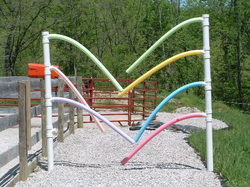
The purpose of this element is to prepare the horse and rider for dealing with situations in which it is necessary to push through substantial brush and to desensitize the horse and rider to having the noodles brush against parts of their bodies.
Debris Field
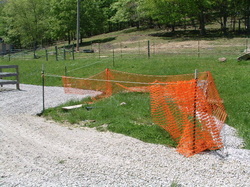
The purpose of this element is to prepare the horse and rider to see and step around things which might be encountered on the trail. It will also be used as an environmental awareness activity.
Up and Over
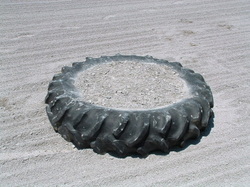
The purpose of this element s to challenge the horse and rider to abruptly change elevations to simulate steep conditions on the trail where a step up over or onto a rock ledge is necessary.
Bridge / Teeter Totter
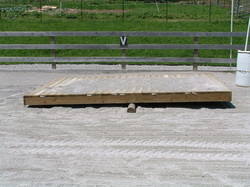
The purpose of the BRIDGE is teach the horse and rider to cross on wood that makes a sound and to stay on the narrow bridge without stepping off. Situations may arise on the trail when the horse must be willing to trust the rider to go where the rider needs them to go in tight or scary areas. The bridge can also be used to teach stepping up and stepping off which will benefit with trailer loading. The TEETER TOTTER uses the exact same piece of equipment with a fulcrum at the balance point to teach how to deal with a seemingly unstable surface.
Water Mist
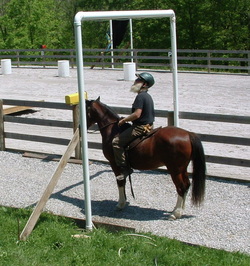
The purpose of this element is to prepare the horse and rider for the possibility of rain on a trail ride, as well as offering heat relief for horse and rider during hot conditions
Log Walk Over
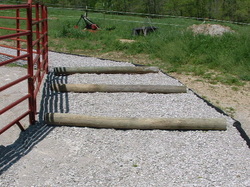
The purpose of this element is to challenge the horse and rider to maintain control when going over and around logs that may be found on the trail and to make the decision when to go over and when to go around a particular log.
Pass Through Curtain
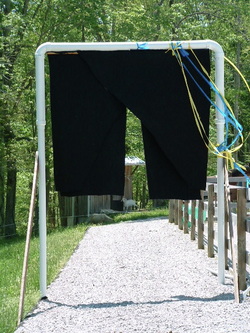
The purpose of this element is to prepare the horse and rider for having to push through light brush and desensitize for the feeling of claustrophobia that may effect some equines and participants
Tire Course
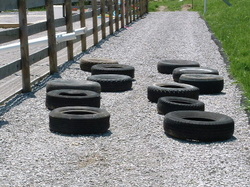
The purpose of this element is to perfect the rider’s ability to rein the horse walking through, forward and backward through the tire course and by having the horse step up onto the gravel packed into the tires on cue. Controlling the horse’s movement will help the rider and horse to move safely on an actual trail
In and Out
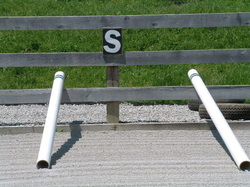
This element challenges horse and rider to back out of a tight situation.
Walk the Plank
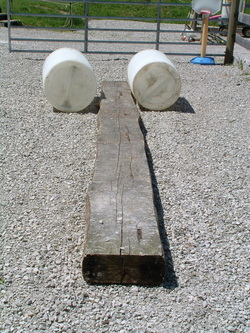
This element challenges both horse and human. Initially the challenge is for the participant leader to encourage the horse to walk the plank from one end to the other then for them to complete the length mounted.
The log is 4 inched thick, 16 inches wide and 8 feet long.
The log is 4 inched thick, 16 inches wide and 8 feet long.

